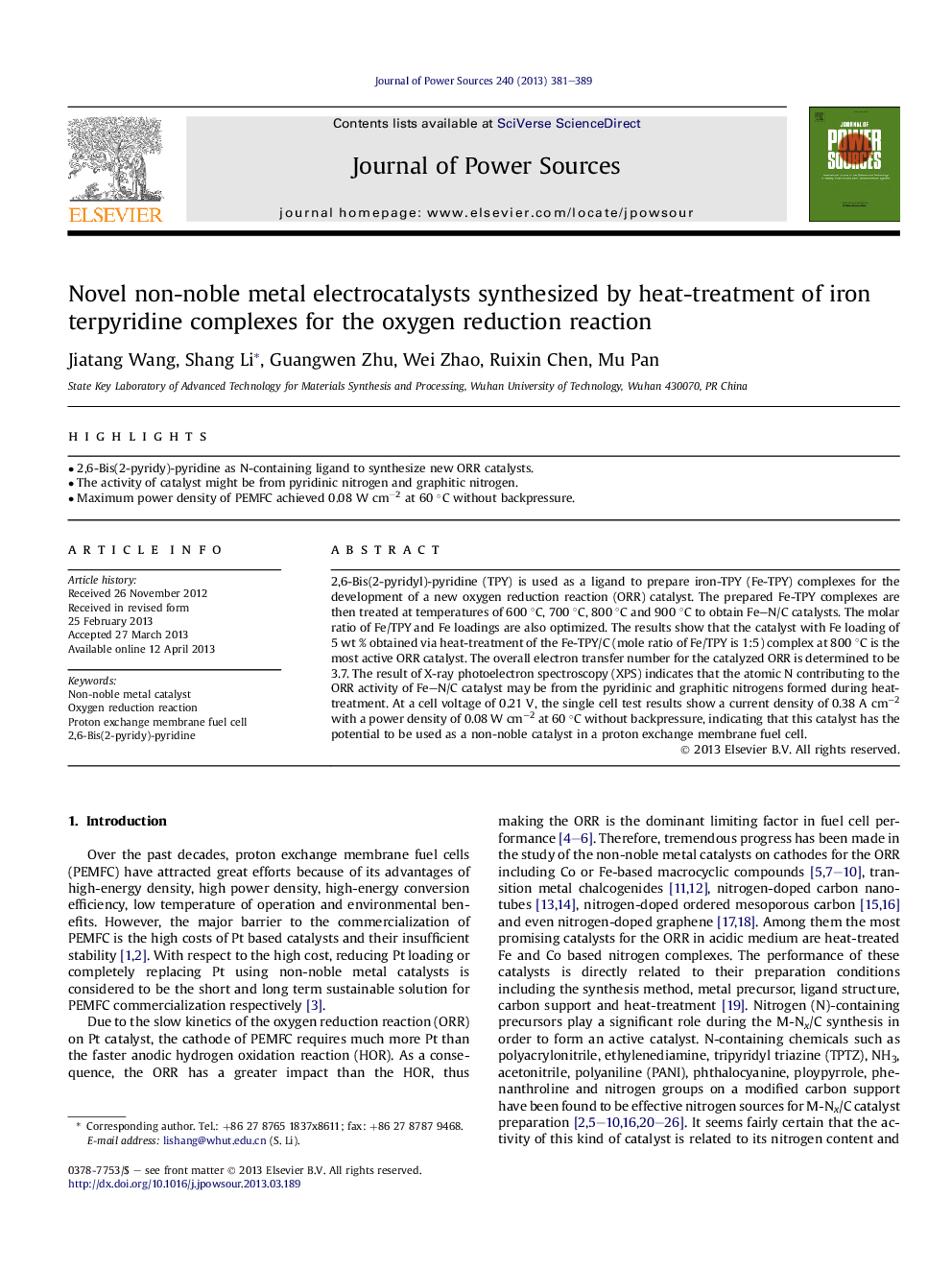| Article ID | Journal | Published Year | Pages | File Type |
|---|---|---|---|---|
| 7739835 | Journal of Power Sources | 2013 | 9 Pages |
Abstract
2,6-Bis(2-pyridyl)-pyridine (TPY) is used as a ligand to prepare iron-TPY (Fe-TPY) complexes for the development of a new oxygen reduction reaction (ORR) catalyst. The prepared Fe-TPY complexes are then treated at temperatures of 600 °C, 700 °C, 800 °C and 900 °C to obtain Fe-N/C catalysts. The molar ratio of Fe/TPY and Fe loadings are also optimized. The results show that the catalyst with Fe loading of 5 wt % obtained via heat-treatment of the Fe-TPY/C (mole ratio of Fe/TPY is 1:5) complex at 800 °C is the most active ORR catalyst. The overall electron transfer number for the catalyzed ORR is determined to be 3.7. The result of X-ray photoelectron spectroscopy (XPS) indicates that the atomic N contributing to the ORR activity of Fe-N/C catalyst may be from the pyridinic and graphitic nitrogens formed during heat-treatment. At a cell voltage of 0.21 V, the single cell test results show a current density of 0.38 A cmâ2 with a power density of 0.08 W cmâ2 at 60 °C without backpressure, indicating that this catalyst has the potential to be used as a non-noble catalyst in a proton exchange membrane fuel cell.
Related Topics
Physical Sciences and Engineering
Chemistry
Electrochemistry
Authors
Jiatang Wang, Shang Li, Guangwen Zhu, Wei Zhao, Ruixin Chen, Mu Pan,
